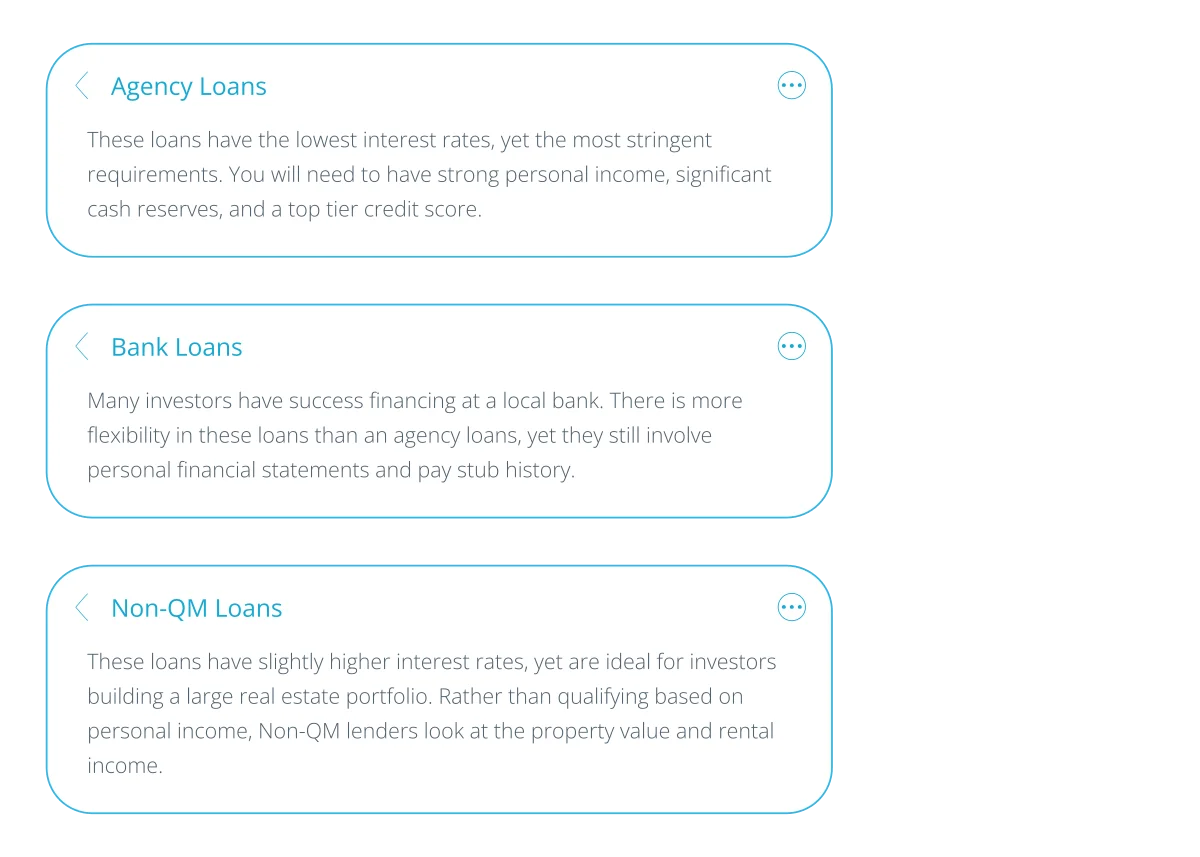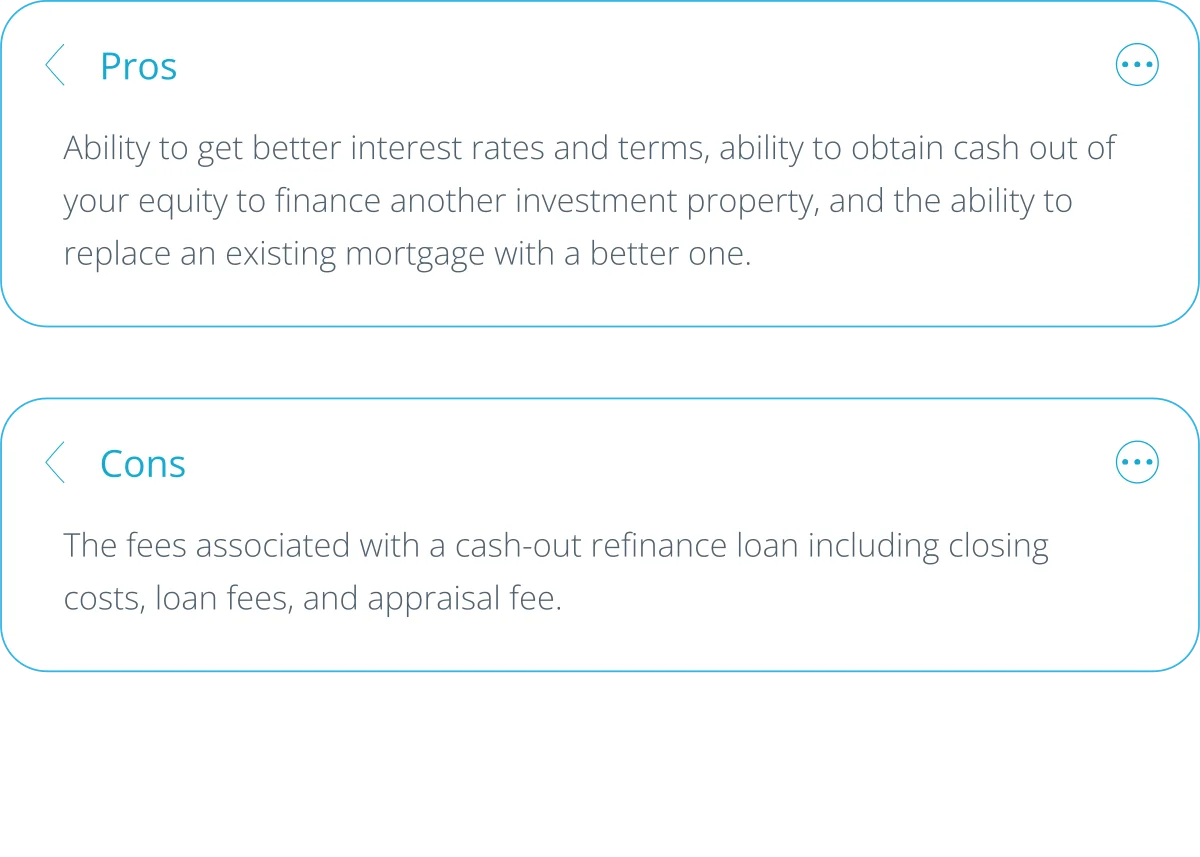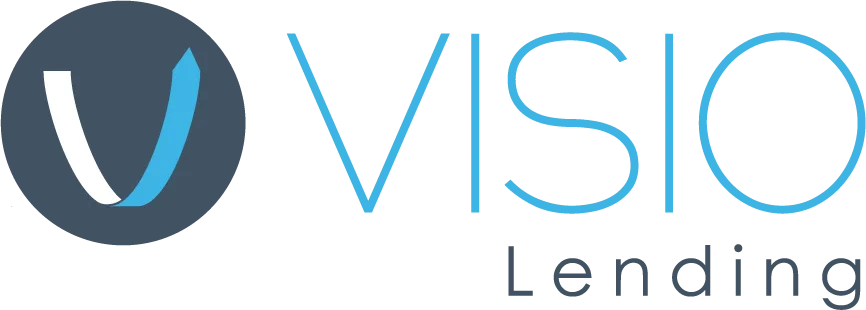This blog post has been updated May 2024 for freshness and accuracy
Refinancing a loan is a way to replace the current financing of a property with a new loan. If you’ve been making your monthly payments and have built up significant equity in your home, a cash-out refinance can be an excellent resource to save money, fund home improvements, consolidate debt, or purchase new rental properties. In this article, we’ll explain the definition of a cash-out refinance, how it works, and how to make a cash-out refinance work for you.
What is a cash-out refinance?
A cash-out refinance replaces an existing loan with a new loan for a higher amount, and the difference in cash is yours. Obtaining new financing on a property that is currently not pledged on a loan in order to pull cash out can also be considered a cash-out refinance.
The cash-out refinance process works by closing out your original mortgage, then taking out a mortgage larger than the current balance. The extra cash is then paid to you in a lump sum, which can be used for whatever you like. Options include paying down credit card debt or personal loans, funding a down payment and closing costs on a new investment or fixing up the property.
Like a rate-and-term, cash-out refinance rates are often more advantageous than the current mortgage loan if you time the market right. This means you’ll enjoy a lower monthly mortgage payment, with more going toward the principal rather than interest payments.
How much cash you can receive depends greatly on how much equity you have built up in your home. Generally, you need to have at least an 80% LTV, which means you’ll have to have 20% home equity.
Cash-Out Refinance vs. Rate-and-Term Refinance
A rate and term adjustment is when you refinance an existing loan with a new mortgage loan that has different terms. This often allows you to get a longer loan term and lower interest rate, which will help reduce your monthly mortgage payment and improve your cash flow. However, you don’t get any payout as you would with a cash-out refinance — just improved terms. You also don’t take out a larger loan amount; the new mortgage is the same size or smaller than the original.
People often use a rate-and-term to refinance into another loan type. For example, they may select between VA, FHA, and conventional loans. For investment properties, some may convert conventional mortgage loans into DSCR loans, which are better suited for rental properties. You can also explore different mortgage lenders if you don’t like your original lender. (You can find out your DSCR in seconds using our online calculator.)
On the other hand, cash-out refinances are a fantastic tool for real estate investors looking to grow a portfolio of investments by leveraging home equity. The cash that borrowers pull out of their existing investment properties — whether on a loan or not — could be put toward another rental property, a rental property renovation, or even a flip.
Cash-Out Refinance vs. Home Equity Loan
With a home equity loan, you are not replacing an existing mortgage but taking out a new one, using the property as collateral. Your home equity is used to borrow money, typically at a lower interest rate than your original home loan. This means that, unlike a cash-out refinance, you will now have a monthly payment for both your primary mortgage and the home equity loan.
Home equity loans can be useful for debt consolidation, as the combined interest rate of both loans may still be lower than the interest rate on other existing debt, like credit card balances. You will get a lump-sum payment as you would with a cash-out refinance. This is what makes a home equity loan different from a home equity line of credit, which works almost exactly like credit card accounts.
However, the higher monthly payment can damage your credit score if you don’t negotiate wisely to get an advantageous interest rate. It can also put you at risk of losing your property if you can’t afford the monthly mortgage payment change.
In general, mortgage refinancing works better for investment purposes than home equity loans, with a cash-out refinance being the best choice when you want to reinvest home equity to pay closing costs, down payments, and construction costs. A home equity loan should only be used if you have urgent needs, like delinquent credit card debt or medical bills, and you can also afford the larger monthly payment.
How Cash-Out Refinancing Works
We already defined cash-out refinances as replacing a mortgage with a new loan for a higher amount or obtaining financing on a property that is not tied to a loan. So how exactly does that work? It all comes down to home equity, which is the amount of the mortgage you’ve paid off either through payments or by your home increasing in value over time. The key to a successful cash-out refi is owing less than the value of your home.
Cash-Out Refinance Example
For example, if your home is valued at $300,000 and you owe $200,000, in theory, you could pull out $100,000 of equity through a cash-out refinance. You’ll also need to co consider closing costs and other costs associated with the loan, as well as the maximum LTV, but we’ll discuss that more later.
Is a Cash-Out Refinance the Right Tool for You?
The answer depends on your situation. Some essential factors in your decision should be the mortgage balance, amount of equity you have in the home and how much financing you can obtain. Let’s take a look at some other key considerations.
The Costs Associated with the Loan
This includes the closing costs and loan fees as well as the appraisal. These can vary widely from situation to situation but are important to consider.
The Maximum LTV
For rental loans, the maximum LTV for purchases and rate & term refinances typically is 80%, and 75% for cash-out refinances. This means you’ll have to provide at least a 25% down payment. Visio follows this industry standard.
Your Financing Goals
What are you looking to use the money from a cash-out refi for and will you be able to meet your goals by refinancing? Some common ways people use a cash-out refinance include:
- Renovating and increasing the value of the property you pull cash out of:
For a newly-renovated rental property with nice amenities, like new kitchen appliances or a luxurious spa tub in the master bathroom, you can charge more rent.
- Renovating and increasing the value of another property:
Refinance one property to fund the renovation for another that needs some TLC. - Buy another investment property:
A common Visio investor strategy is to pull cash out from one property to cover some of the costs of your next investment, including the down payment. - Finance your next flip:
A cash-out refinance is a fantastic alternative to borrowing hard money for flippers.
The Lender’s Requirements
The requirements vary by lender, but here is a look at the Visio Lending requirements for a cash-out refi:
- Credit Score: A minimum credit score of 680. Here’s more on credit score for real estate investors.
- Cash Reserves: A minimum of 6 Months PITIA (Principal, Interest, Taxes, Insurance, and Association Dues)
- Borrower Type: Investors Only, Individuals, LLCs, corporations, and limited partnerships, US. Citizens
- DSCR: A debt-service coverage ratio of at least 1.2.
- Loan-to-Value: Visio’s maximum loan-to-value for a cash out refinance loan is 75%, so you are going to need a minimum 25% down payment.
Ways to Refinance a Rental Property
When refinancing a rental property, there are a few standard options:
- Agency Loans:
These loans have the lowest interest rates, yet the most stringent requirements. You will need to have strong personal income, significant cash reserves, and a top tier credit score. - Bank Loans:
Many investors have success financing at a local bank. There is more flexibility in these loans than an agency loans, yet they still involve personal financial statements and pay stub history. - Non-QM Loans (Visio Lending):
These loans have slightly higher interest rates, yet are ideal for investors building a large real estate portfolio. Rather than qualifying based on personal income, Non-QM lenders look at the property value and rental income.
The Rental Property Cash-Out Refinance Process
The way a cash-out refinance works varies by lender, here is an overview of what you can expect if you work with a highly specialized rental property lender like Visio:
- Application:
Send in all of your initial documentation including your current lender information, existing loan balance, entity documents if applicable, title company contacts, and identification. Pay for and order an appraisal, and get your credit score and history evaluated. - Processing:
If the appraised value and current mortgage balance fit for a cash-out refinance, your loan will move into the processing stage. A processor will gather the rest of your documentation, verify your cash reserves, and make sure you are adequately insured. A specialized investment property lender will not look at your bank statements or personal income. - Closing:
Your processor will submit your full loan package to underwriting and get your closing scheduled.
How long does it take to get money from a cash-out refinance after closing?
The cash-out refinance requirements are unique in that, unlike the underwriting process for your original mortgage, there is a brief waiting period before you can get the lump sum from your refinanced mortgage. Federal law requires a three-day rescission period so the borrower can change their mind about taking cash out of their home.
It may take up to five days for your mortgage lender to send the funds, but the actual time may be more or less than this. Thanks to our streamlined process, Visio Lending is able to provide disbursements quickly, and we’ll keep you in the loop about when you can expect the lump sum from your cash-out refinance.
The Pros and Cons of a Cash-Out Refinance for a Rental Property
Before cash-out refinancing your rental property consider some of the pros and cons.
- Pros:
Ability to get better interest rates and terms, ability to obtain cash out of your equity to finance another investment property, and the ability to replace an existing mortgage with a better one. - Cons:
The fees associated with a cash-out refinance loan including closing costs, loan fees, and appraisal fee.

When to cash-out refinance?
Firstly, your decision of when to pursue a cash-out refinance depends on the amount of equity in your home. A good rule of thumb is to have at least 30% home equity, though you can pursue cash-out refinancing with at least 20% LTV. You’ll also want to ensure your interest rate will be lower than your current mortgage by watching cash-out refinance rates.
A cash-out refinance may work well for you if you have a specific need for a lump sum that can’t be satisfied by a smaller personal loan. These are some of the most common ways to utilize cash-out refinancing.
- Home improvement – The equity in your home can be reinvested for renovations, general maintenance, or additions.
- Investment – You can pay closing costs, a down payment, and other fees associated with a new investment. It leaves cash reserves for other expenses, like your monthly mortgage payment and homeowners insurance. A larger down payment lets you build equity faster, meaning you can tap into that home’s value sooner.
- Debt consolidation – The cash-out refinance rate is often lower than the interest rate for a credit card, student loan, business loan, or car loan. You can pay these off and improve your monthly cash flow. It will also reduce your debt-to-income ratio, boosting your credit score and helping you qualify for more mortgages.
- Urgent bills – In some circumstances, you may have a personal need like medical bills that must be satisfied quickly. Cash-out refinancing will help you finance these while also enjoying a better interest rate.
Alternative Ways to Grow a Real Estate Portfolio
While a cash-out rental property refinance is a sound method to grow your portfolio, particularly if you have already accumulated equity in investment properties, there are alternative methods:
- Hard money loans:
A hard money loan can be a fantastic short-term method to obtain an additional investment property. You can even get a refinance loan to get better interest rates and terms on your hard money loan. - Home equity options:
If you have a primary residence, you can use a home equity loan or a home equity line of credit to borrow against the equity and purchase an investment property. With this method it is essential that you keep up with your monthly mortgage payments in order to hold onto your primary residence. - Personal loans:
Some investors are able to find private lenders and obtain a personal loan from family or friends. This option, however, is often hard to find.
Get Fast and Dependable Rental Property Refinance Loans
Visio Lending is a leading provider of 30-year financing to investors in single-family (1-4 unit) residential rental properties, including vacation rentals. Visio underwrites its investment property loans, based on property level cash flow and borrower credit, rather than the borrower’s personal income. As a result, the Rental360 is an ideal financing product for the self-employed investor or the investor that is building a portfolio of rental properties.
Key advantages of Visio’s Rental360 program over agency or bank portfolio loans include:
- No personal debt-to-income ratio:
Visio uses either in place or market rents when estimating the property level cash flow. - Low documentation requirements
Visio does not require tax returns or employment verification. - Legal protections:
Visio allows a customer to finance their rental properties in LLCs and corporations to shield their other personal assets from potential liability. - Scalable:
With proven experience and payment performance, there is no hard limit to how many properties an investor can finance with the Rental360 program.
Since late 2015, Visio has financed more than $2.8 billion in rental property loans.






